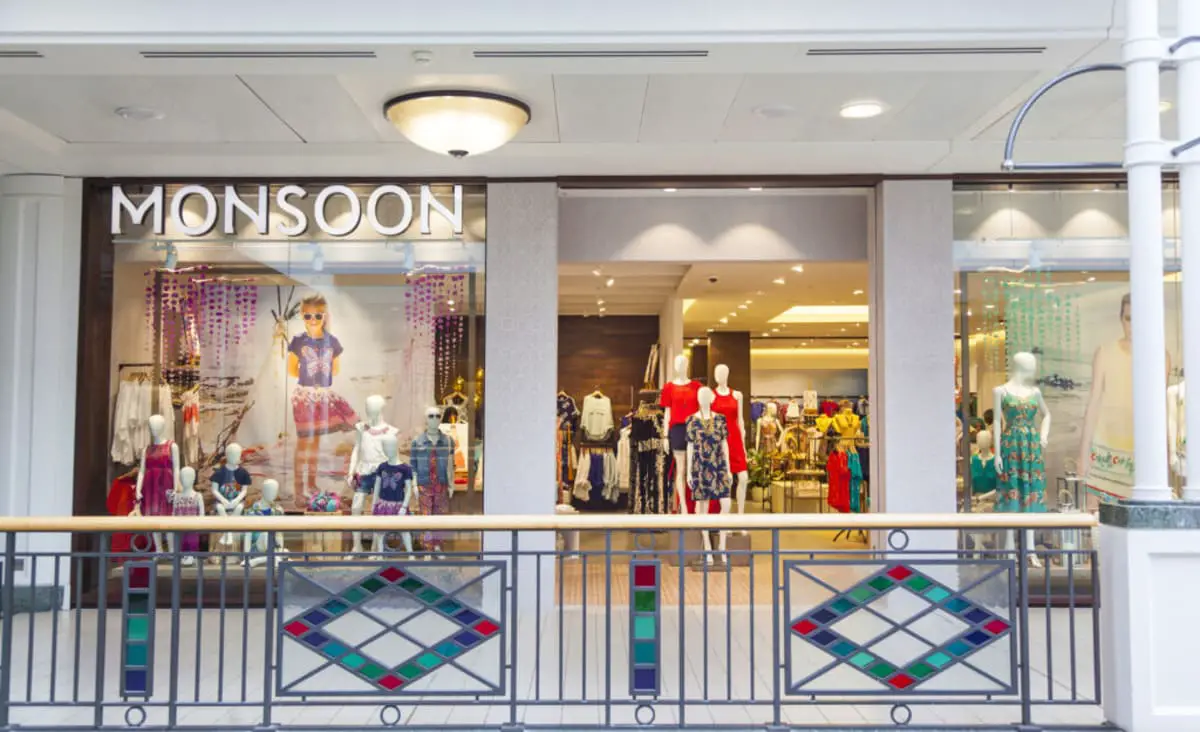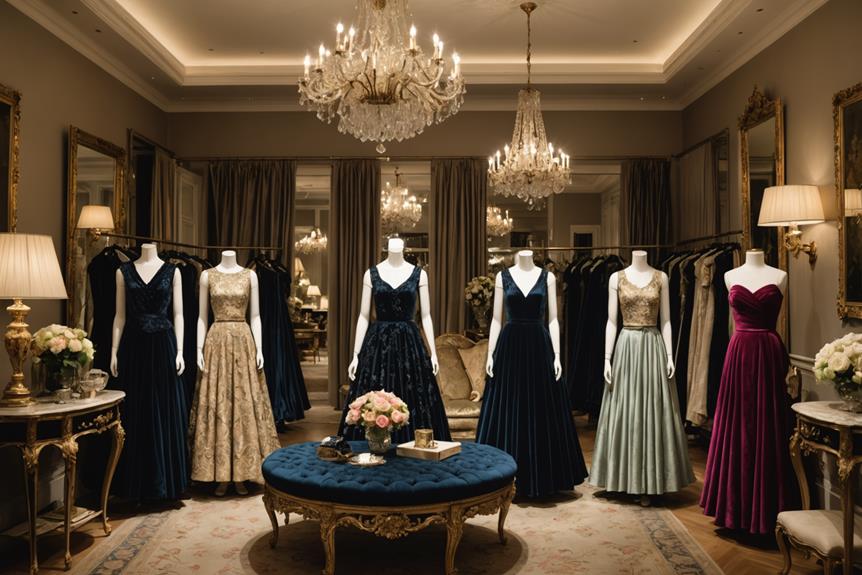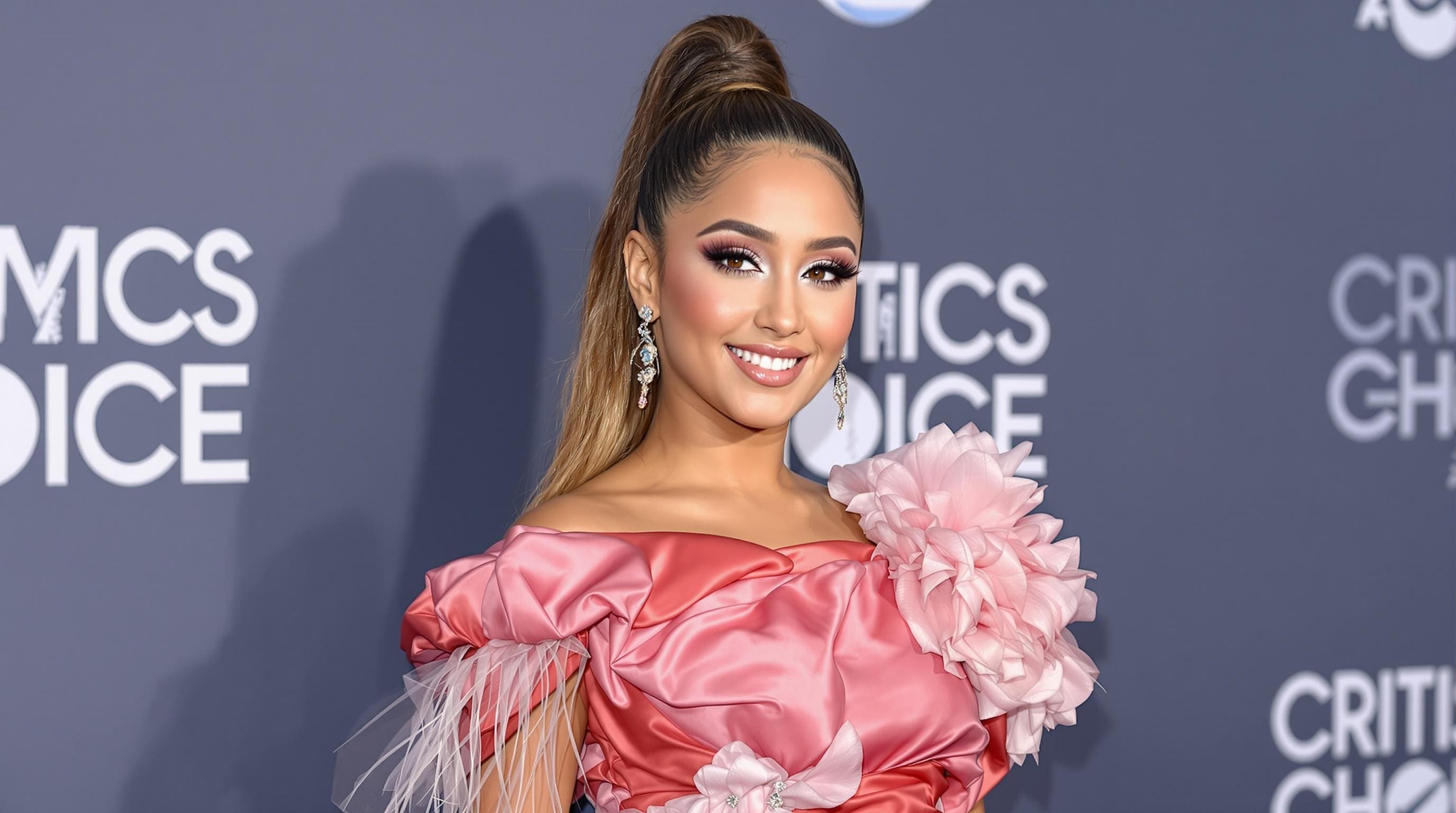Monsoon, a quintessentially British brand, began its journey in 1973 when Peter Simon, a market-stall trader, opened the first store in London’s Beauchamp Place. This inaugural shop was just the beginning of what would become a beloved high-street fashion brand. By 1984, Monsoon expanded its offering by launching Accessorize, a sister brand focused on accessories, with its first store opening next to Monsoon in Covent Garden. The brand quickly gained a reputation for its vibrant, globally-inspired collections, which were reflective of Simon’s own travels and experiences in Asia.
Over the years, Monsoon has not only grown its retail presence but also extended its philanthropic reach. In 1994, the Monsoon Accessorize Trust was established, aiming to support underprivileged women and children in Asia. This charitable endeavor has become a significant aspect of the company’s ethos, demonstrating a commitment to social responsibility alongside its commercial pursuits. The brand’s journey through the years has seen various milestones, including a listing on the Stock Exchange in 1998, followed by a return to private ownership in 2007, when Peter Simon bought back the company for £185 million.
The evolution of Monsoon’s retail footprint has been paralleled by its artistic pursuits and cultural investments. In 2009, the company moved to a new headquarters designed by Allford Hall Monaghan Morris, which also houses a collection of over 300 works of modern and contemporary art. Despite facing challenges, including a period of administration during the COVID-19 pandemic, Monsoon has shown resilience. The brand was reacquired by its founder, Peter Simon, in 2020 and again in late 2022, underscoring its enduring appeal and the founder’s dedication to its legacy. This rich history, coupled with an ever-evolving aesthetic, makes Monsoon a notable name in British fashion.
SS20 Monsoon Ladies Collection
How to tell if Monsoon is vintage from the logo
Monsoon has undergone several logo changes over the years, reflecting shifts in design trends and brand identity. Identifying the era of a Monsoon product can often be determined by examining the logo. Below are the distinctive characteristics of Monsoon logos from different periods.
1980s to 1990s Monsoon logo
- The logo from this era features a distinctive, woven pattern in the lettering.
- The font style is bold and heavily stylized, with an emphasis on geometric shapes.
- This design reflects the bold and experimental graphic design trends of the 1980s and 1990s.

1980s to 1990s Monsoon logo
1990s to 2000s Monsoon logo
- The logo transitioned to a more organic and flowing handwritten style.
- The blue color became a hallmark of the brand during this time, giving a relaxed and casual feel.
- This period’s logo represents a shift towards a more modern and approachable image.
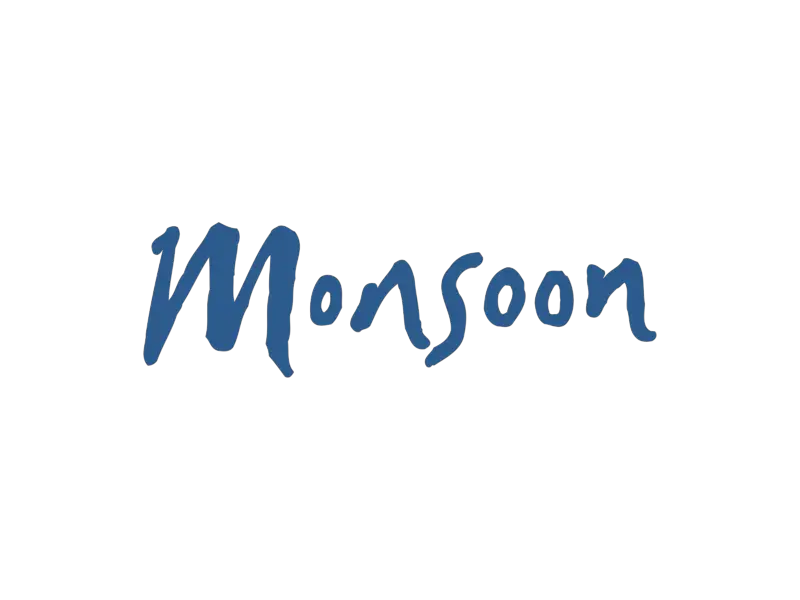
1990s to 2000s Monsoon logo
2010s to now Monsoon logo
- The current logo uses a clean and sophisticated font, with a return to a more minimalist aesthetic.
- The logo is entirely in uppercase, emphasizing a sense of elegance and modernity.
- The color palette is typically monochromatic, adding to the timeless and versatile appeal.

2010s to now Monsoon logo
How to tell if Monsoon is vintage from the tags
The evolution of Monsoon’s brand tags provides an insightful look into the company’s history and design changes over the decades. The tags reflect shifts in branding, font styles, and tag designs that can help identify the era of a garment’s production. Below, we explore the distinct characteristics of Monsoon tags from the 1980s to the 2010s.
Need help with vintage tags or labels? Submit a picture on our vintage tag identification page, and we’ll take care of it!
1980s vintage Monsoon tags
- Distinctive hand-drawn style logo in brown or red colors.
- Typically featured a simple design with the brand name “Monsoon” prominently displayed.
- Tags were usually made of woven fabric, emphasizing a handmade aesthetic.
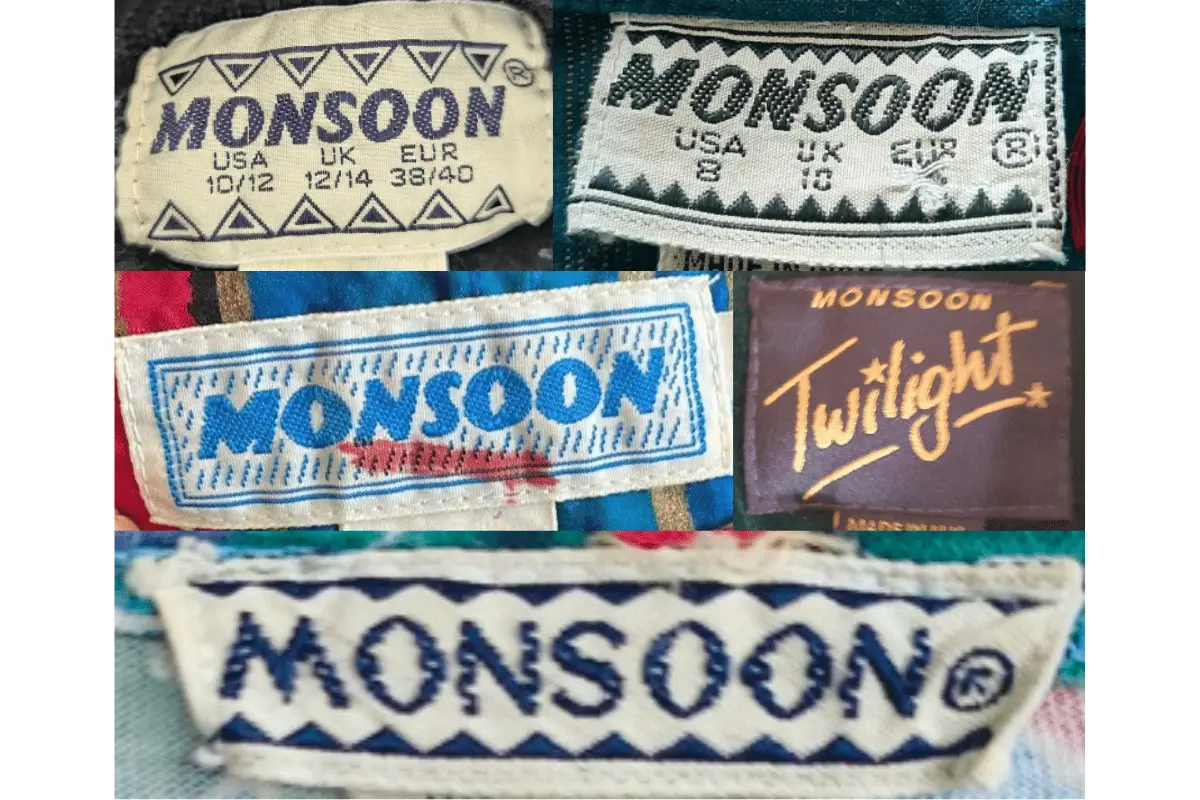
1980s Monsoon tags
1990s vintage Monsoon tags
- Transition to more structured and standardized font styles.
- Introduction of additional text like “100% Linen” or specific collection names.
- Tags often included size and country information such as “UK/EUR/USA”.
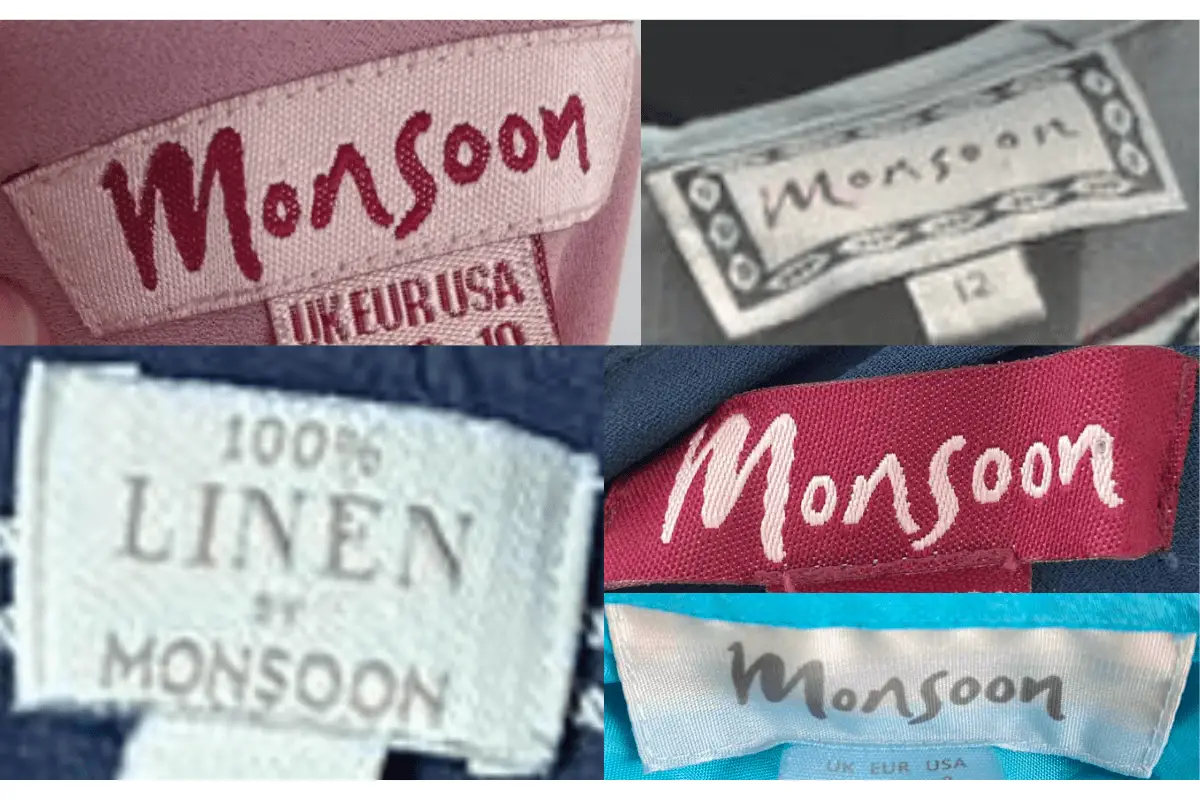
1990s Monsoon tags
2000s vintage Monsoon tags
- More modern and uniform font style, usually in bold letters.
- Tags were often accompanied by collection names or material information.
- Tags featured brighter colors and more elaborate designs.

2000s Monsoon tags
2010s vintage Monsoon tags
- Use of a more minimalist and sleek design approach.
- Tags often included branding elements such as logos or specific collection motifs.
- Materials and colors varied, reflecting diverse seasonal collections.
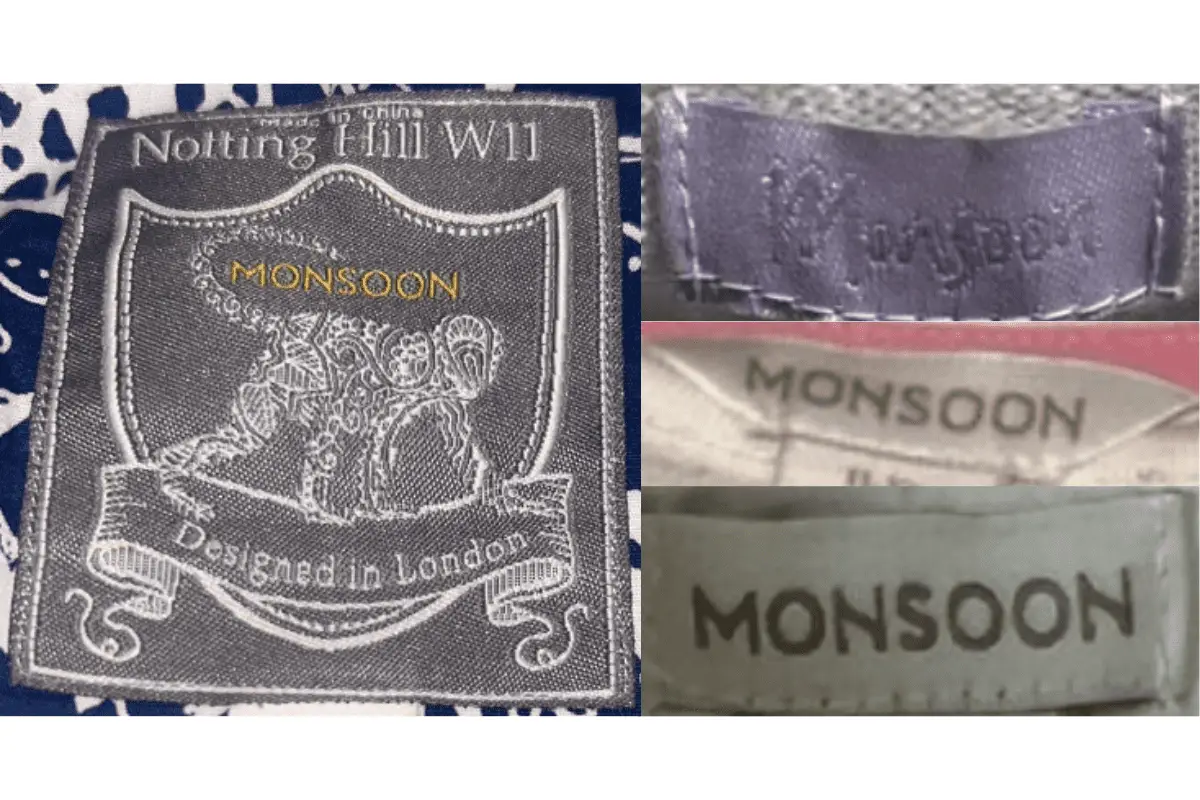
2010s Monsoon tags
